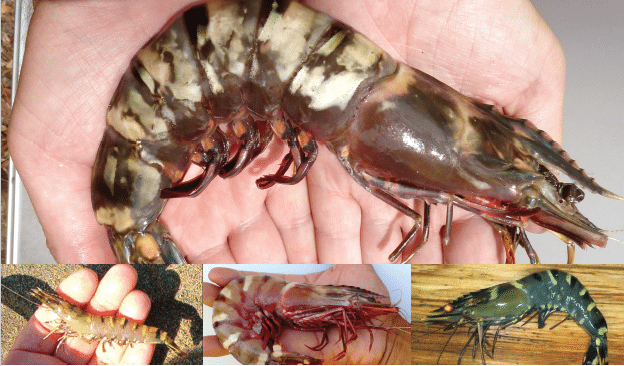Have you seen this shrimp?
That’s the question being posed to fishermen on the coast by the Mississippi Department of Marine Resources (MDMR). The MDMR is on the lookout for the distinct dark and light striped patterned shrimp known as the Asian Tiger Shrimp (Penaeus monodon).
According to the National Oceanic Atmospheric Administration (NOAA), Asian Tiger Shrimp are native to Indo-Pacific, Asian, and Australian waters but are now found along the southeastern and Gulf Coast waters of the United States. Fortunately for us (and our love of our native shrimp), scientists with NOAA have not deemed the species “established” in U.S. waters, but sightings have increased over the past several years.
This increase in sightings has created a need to collect more data on the potentially problematic species. Scientists are still determining the environmental impact of the invasive shrimp, but some potential impacts to native shrimp populations have researchers concerned. The first being general size difference. According to the United States Geological Survey (USGS), Tiger Shrimp can grow to a foot in length (yes, you didn’t read that wrong. They can grow up to 12 inches). With our native brown shrimp growing to a potential seven inches, the Tiger Shrimp could pose a significant threat regarding competition for food and habitat. I mean a guy that has at least five inches on you could get the upper hand in a scrap for food and living space. Another potential problem is Tiger Shrimp can carry diseases that could affect other crustaceans. If a disease is introduced, we could see a potential loss of our native species.

Many theories exist on how this species arrived in our neck of the woods such as escaping from aquaculture farms, ballast water from ships, or even just floating in on currents. USGS states, farming of Tiger Shrimp was prevalent in the 70s and 80s, but there are currently no facilities growing Tiger Shrimp in the United States. With all the theories and no definite source confirmed on how the species got here, it is difficult for scientists to determine if these big fellas are breeding in U.S waters or coming into native shrimp areas on currents.
If you come across one of these invasive shrimps, the MDMR asks you to report it by writing down your trawl information (captain name/and or vessel name, date and time, location (latitude and longitude), and water depth is necessary. Then, please give Jason Saucier a call at (228)523-4038 or by contacting him by email at Jason.saucier@dmr.ms.gov.